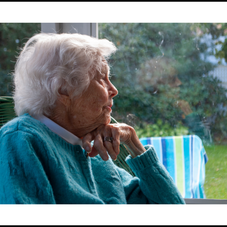Alternatives to restraints "Things we can do to avoid restraints."
A restraint is a physical, chemical, or environmental means of controlling an individuals behavior. Restraints are only used whenever a patient is in danger to hurt himself/herself or others and is only as a last resort whenever all aternatives to restraints failed. Use of restraints must meet the following objectives: Reduce the risk of patient injury, prevent interuption of therapy (such as traction, IV infusion, nasogastric tube feeding, or Foley catherization), prevent the confused or combative patient from removing life-support equipment, and reduce the risk of injury to others by the patient. The use of any type of restraint involves psychological adjustment for the patient and family. If restraint must be used, assist the family members and the patient by explaining the purpose of the restraints, the patient's expected care while restrained, the precautions to be taken to avoid injury, and the temporary and protective aspects of restraints.

Image credit: pamelaspirowagner.com
The use of restraint is controversial as they have been associated with negative consequences including injury and death.
Effects of restraints to patients:
Physical effects: Panic/fear, Incontinence, Infection, Constipation, Mustle atrophy, and Dehydration.
Emotional effects: Loss of self-esteem, Independence, Dignity, Anger or Agitation, Isolation, and Depression.
Other effects: Pneumonia, Strangulation, and Fall.
Restraint should be avoided as much as possible. Before applying restraint why not try these few alternatives:
1. Orient patients and families to their environment; explain all procedures and treatments.
2. Provide companionship and supervision, use trained sitters or adjust staffing.
3. Offer diversionary activities, such as listening to music or having something to hold.
4. Assign confused or disoriented patient to room near the nurse's station; observe these patients frequently.
5. Use calm, simple statements and physical cues as needed.
6. Use de-escalation, time-outs, and other verbal intervention techniques when managing aggressive behavior.
7. Provide appropriate visual and auditory stimuli (i.e. family pictures, a clock, or a radio).
8. Remove cues that promote leaving (i.e. sight of elevators, stairs, or street clothes).
9. Promote relaxation techniques and normal sleep patterns.
10. Attend to the patient's toileting, food and fluid needs.
11. Camouflage IV lines with clothing, a stockinette, or a kling dressing.
12. Evaluate all medications the patients are receiving, and ensure effective pain management.
13. Reassess the physical status of patients, and review laboratory findings connected with their health.
Reference:
Canadian fundamentals of Nursing Potter Perry fourth edition





















